Salt plays several important roles in sourdough baking. It’s critical component for fermentation and flavor development. On a chemical level, all salt is primarily sodium chloride (NaCl)Both reducing and increasing its amount can significantly alter the bread’s taste, and finding the right balance is key to achieving a delicious loaf.
It has a pivotal role in developing and strengthening the gluten structure in sourdough bread. Both too little and too much salt can adversely affect the gluten network, impacting the dough’s handling properties and the final texture and volume of the bread.
Salt content in sourdough bread dough has a significant impact on its consistency. More salt generally leads to a firmer, less sticky dough that is easier to handle but can become too tight if overdone. Less salt results in a more sticky, slack dough that might be harder to work with and more prone to over-fermentation.
Let’s dive deeper into each of these topics:
How does salt affect sourdough flavor?
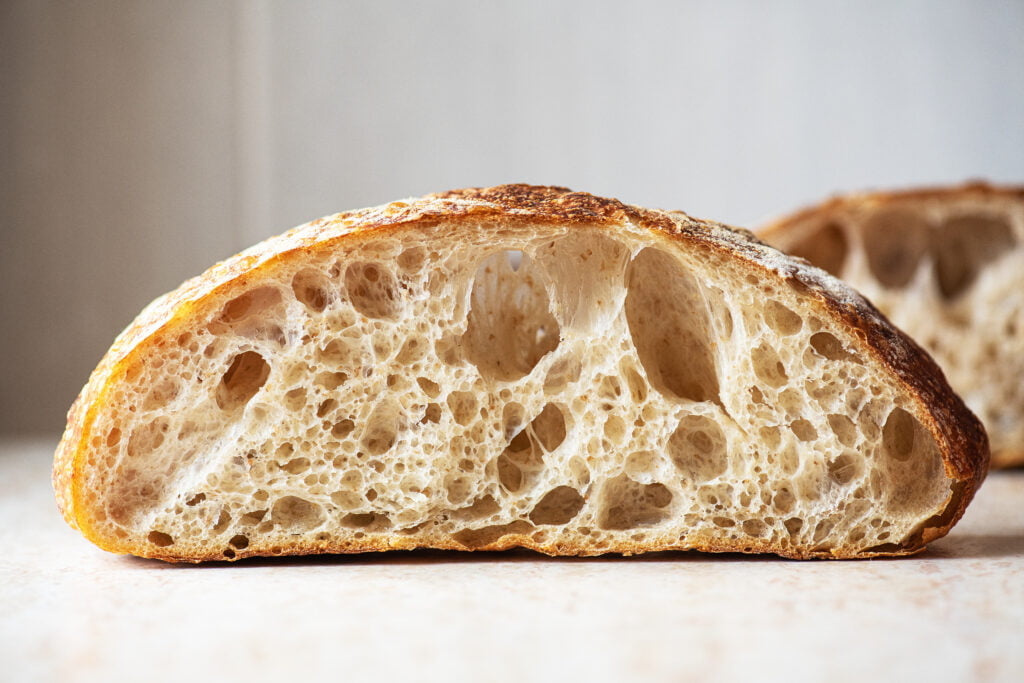
Most obviously, salt enhances the flavor of the bread. Without salt, sourdough often tastes flat and uninspiring. Adjusting the amount of salt in sourdough bread can have a noticeable impact on its flavor profile:
How adding less salt affects flavor?
Reducing the amount of salt in sourdough bread can lead to a blander taste. Salt is a flavor enhancer, so when it’s reduced, the natural flavors of the flour and the subtle nuances developed during fermentation are less pronounced. Some people might prefer this milder taste, especially if they are on a low-sodium diet or are using the bread to pair with already salty foods. However, too little salt can make the bread taste flat and uninteresting.
How adding more salt affects flavor?
Increasing the salt content can enhance the bread’s flavor, making it more savory and appealing. Salt brings out the natural sweetness and complexity of the grains and can balance the tanginess of the sourdough. However, there’s a limit to how much salt can be added before the bread becomes overly salty and unpalatable. Excessive salt can also hinder yeast activity and gluten development, potentially leading to denser bread with less rise.
Balance and Contrast:
Salt in sourdough creates a balance between the sourness of the fermentation and the inherent flavors of the flour. This balance is crucial for a well-rounded flavor profile. The right amount of salt can highlight the subtle sour and complex fermented flavors without overpowering them.
Personal Preference and Dietary Needs:
The “right” amount of salt can vary based on personal taste and dietary requirements. Some bakers experiment with salt levels to find their preferred balance between enhancing flavor and maintaining health considerations.
Interaction with Other Ingredients:
Salt’s impact on flavor can also depend on the other ingredients used in the bread. For example, whole grain flours or additional ingredients like seeds, nuts, or dried fruits can interact with salt, changing the overall flavor profile.
How does salt affect gluten structure?
Adjusting the amount of salt in sourdough bread also affects the gluten structure of the dough. This helps the dough to hold onto the gas produced during fermentation, leading to a better rise and a more open crumb structure.
How less salt affects gluten structure?
Reducing the amount of salt in the dough can lead to a weaker gluten network. Salt strengthens gluten strands, so a reduction can result in a dough that’s less elastic and more slack. This can make the dough harder to shape and may lead to bread with a denser, less airy crumb structure. Without the tightening effect of salt, the dough might also struggle to retain gases produced during fermentation, leading to less rise and a flatter loaf.
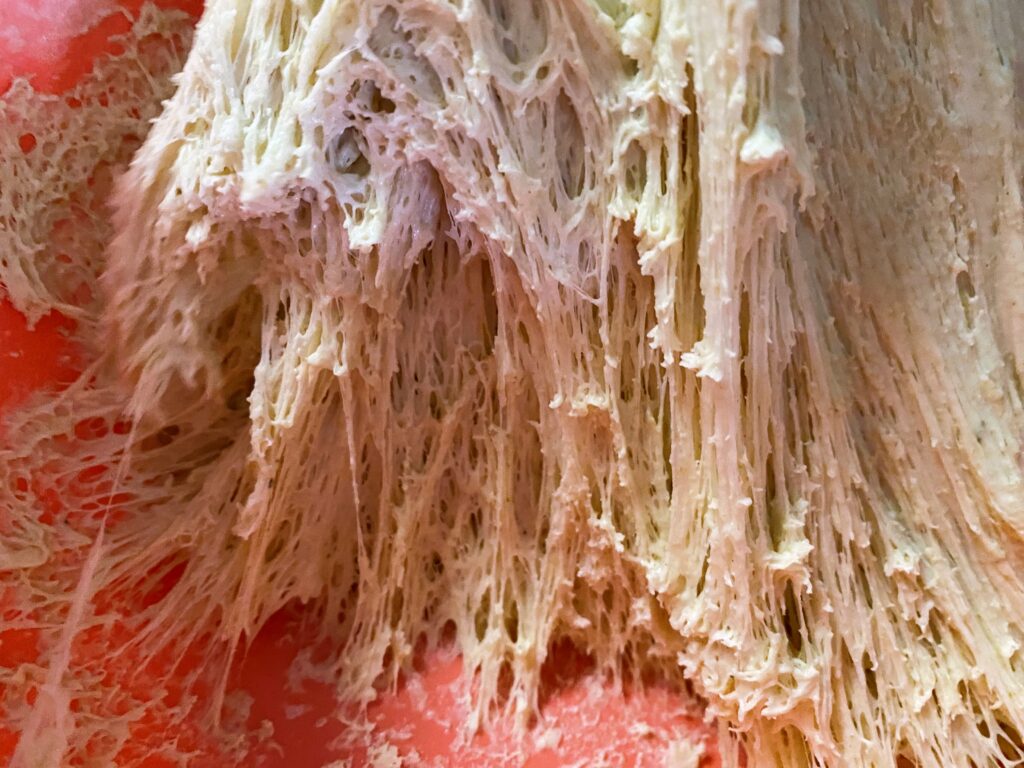
How more salt affects gluten structure?
Increasing the amount of salt strengthens and tightens the gluten network. This can be beneficial to a certain extent, as it helps the dough maintain its shape and retain the gases produced by yeast, contributing to a good rise and a light, airy crumb. However, too much salt can make the dough excessively tight and difficult to work with. Over-salted dough may resist stretching and expansion, potentially leading to a denser bread with less volume.
How much salt do you need for sourdough?
Finding the right balance of salt is crucial for optimal gluten development. Typically, most bread recipes call for about 1.8% to 2% salt by weight relative to the flour. This ratio is generally considered ideal for both flavor and gluten structure. Deviating significantly from this can lead to issues in dough handling and bread texture.
For example, if your recipe calls for 500g of flour, 2% of 500 is 9-10g of salt.
Salt and Hydration Considerations
The amount of water in the dough (hydration) can also influence how salt affects gluten development. Higher hydration doughs might handle a slight increase in salt better than lower hydration doughs, as there is more water available for both the gluten and the salt.
How Does Salt Affect Fermentation?
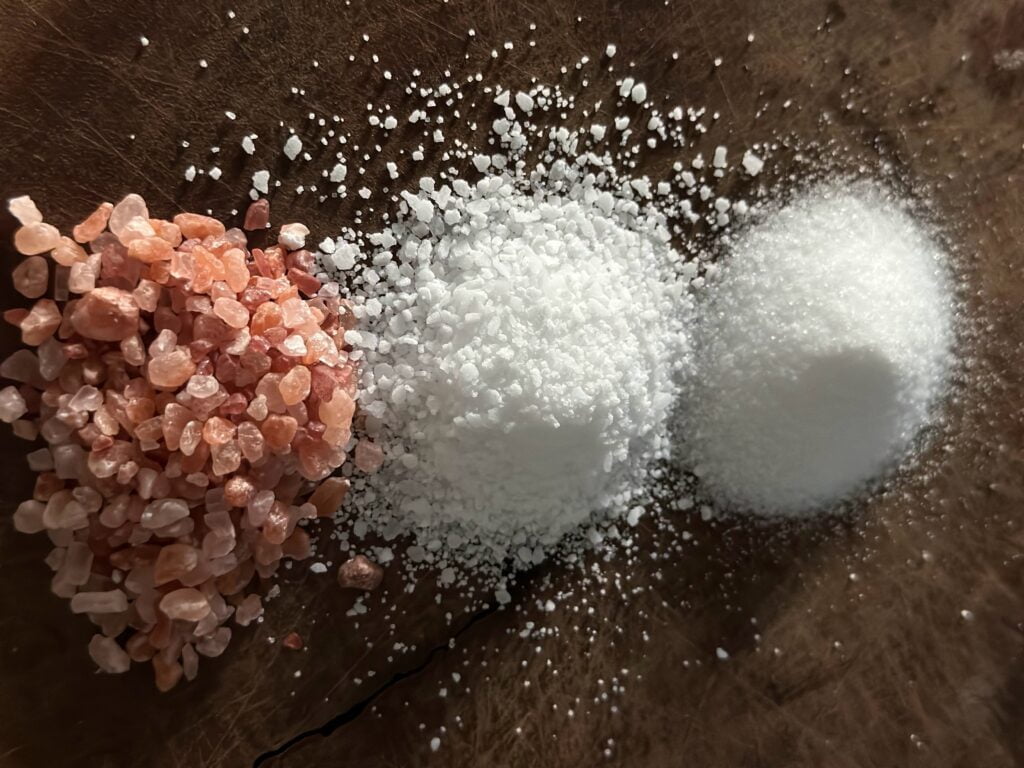
Salt slows down the fermentation process by inhibiting the activity of yeast and bacteria in the sourdough culture. This provides more control over the fermentation process, allowing for the development of complex flavors.
Less salt leads to quicker fermentation process:
Reducing the amount of salt in the dough accelerates the fermentation process. Salt acts as a regulator for yeast and bacteria, slowing down their activity. When there is less salt, these microorganisms work faster, consuming sugars more rapidly and producing gases and acids at a quicker rate. This can lead to a dough that ferments too quickly, potentially resulting in over-fermentation. Over-fermented dough can have an overly sour taste, weaker gluten structure, and less oven spring.
More salt leads to slower fermentation process:
Increasing the amount of salt slows down the fermentation process. This can be beneficial for extending the bulk fermentation period, allowing flavors to develop more fully and creating a more complex-tasting bread. However, too much salt can excessively retard fermentation, leading to under-fermented dough. Under-fermented bread can be dense, have a poor crumb structure, and lack the characteristic sourdough tang.
Balancing Salt for Controlled Fermentation:
Finding the right balance of salt is essential for controlled fermentation. Generally, a salt content of about 1.8% to 2% of the flour’s weight is ideal for most sourdough recipes. This level of salt slows fermentation to a manageable pace, allowing bakers to predict and control the fermentation process more easily.
Dough Consistency
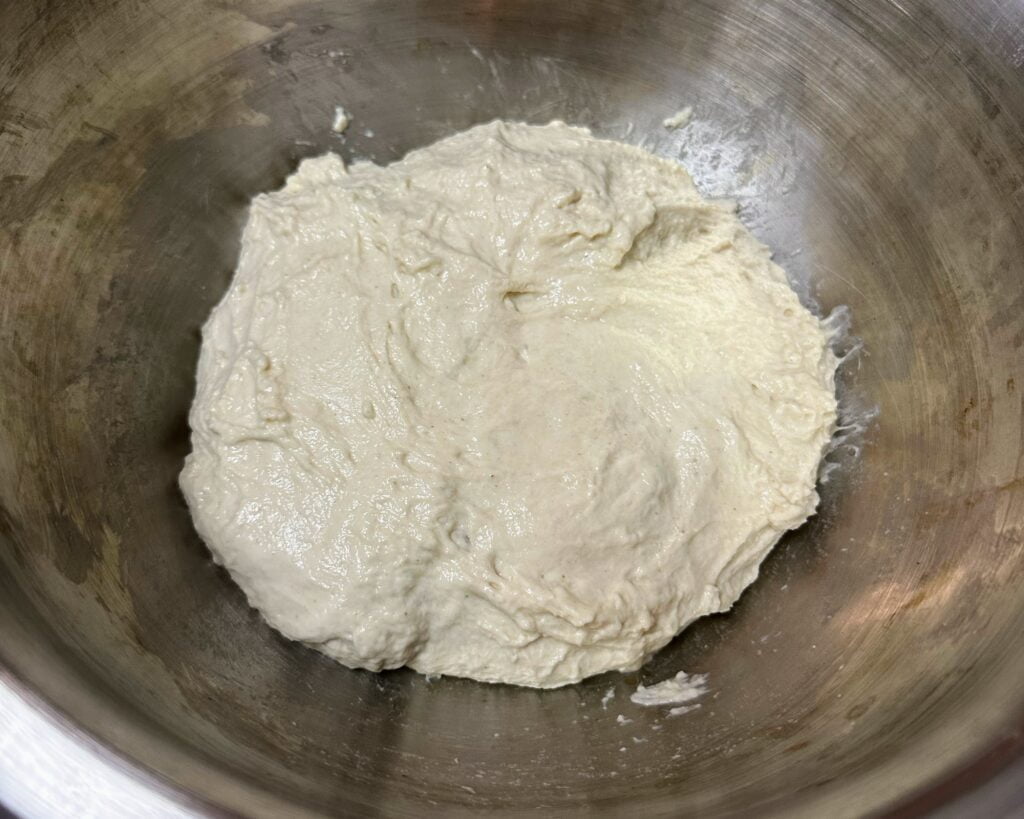
Salt affects the dough’s consistency, making it less sticky and easier to handle. The consistency of sourdough bread dough changes noticeably depending on whether you add more or less salt. Let’s explore these changes in more detail:
What will happen if I add more salt to my dough?
- Increased Firmness. More salt strengthens the gluten network, making the dough firmer and more elastic. This increased firmness can be beneficial in handling and shaping the dough.
- Reduced Stickiness. A higher salt content often reduces the stickiness of the dough, which can be especially helpful in high-hydration breads where the dough is naturally more tacky and challenging to manage.
- Slower Water Absorption. Salt can affect how the flour absorbs water. With more salt, the dough may take longer to absorb water, impacting the initial mixing and kneading stages.
- Potential for Over-tightening. While increased firmness can be helpful, too much salt can make the dough overly tight and less extensible. This can hinder the dough’s ability to expand during fermentation, potentially leading to a denser bread with less volume.
- Delayed Fermentation. More salt slows down yeast activity, which can affect the dough’s rise. You might notice a slower fermentation process, requiring longer proofing times.
What will happen if I add less salt to my sourdough?
- Increased Stickiness and Slackness. Less salt leads to a weaker gluten network, which can make the dough more sticky and slack. This can make it more challenging to handle and shape, as the dough might not hold its form as well.
- Faster Water Absorption. With less salt, the flour may absorb water more quickly, which could affect the mixing process and the dough’s initial consistency.
- Risk of Over-fermentation. Due to less salt slowing down yeast activity, the fermentation process can accelerate. This might result in a dough that ferments too quickly, leading to over-fermentation if not monitored closely. Over-fermented dough can become too acidic and degrade the gluten structure, affecting the final bread’s texture and flavor.
- Reduced Dough Strength. Lower salt levels can result in a dough that lacks strength and elasticity. This can be particularly noticeable during the final shaping and when transferring the dough to the oven, as the dough might spread out more rather than holding a tight shape.
How does salt in sourdough affect shelf life ?
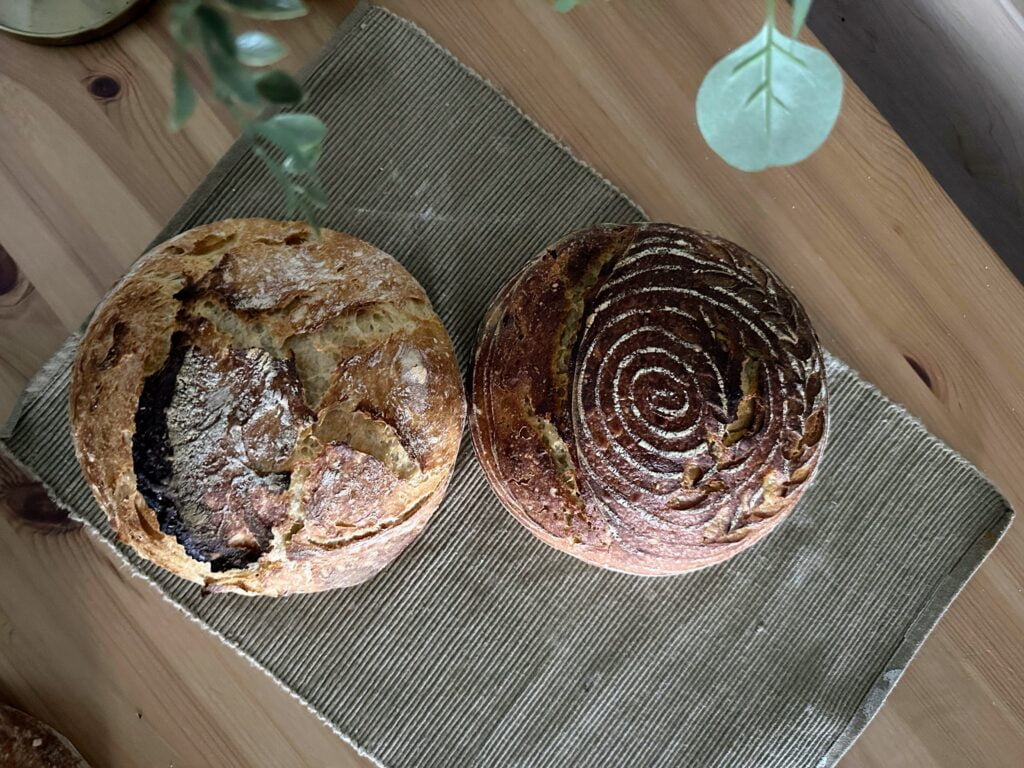
Salt can help to extend the shelf life of the bread by inhibiting the growth of unwanted microbes.
The shelf life of sourdough bread can be influenced by the amount of salt used in the dough:
Adding More Salt:
- Extended Shelf Life: More salt can enhance the bread’s shelf life. Salt is a natural preservative that inhibits the growth of spoilage organisms and mold. By adding more salt, you create a less hospitable environment for these organisms, thus slowing down the rate of spoilage.
- Reduced Staling Rate: Salt can also slow down the staling process. It does this by binding water within the bread, which helps to keep the bread moist for a longer period. This means that bread with a higher salt content may stay fresher and softer for a longer time compared to bread with less salt.
- Flavor Considerations: While more salt can improve shelf life, it’s important to balance this with flavor. Too much salt can make the bread unpalatably salty.
Adding Less Salt:
- Shortened Shelf Life: Less salt means the bread will be more susceptible to microbial spoilage and mold growth. The inhibitory effect of salt on these organisms is reduced, so the bread may not last as long before showing signs of spoilage.
- Faster Staling: With less salt to bind water, the bread may dry out more quickly. This can accelerate the staling process, leading to bread that becomes hard and dry sooner.
- Handling Over-Fermentation: As less salt accelerates the fermentation process, there’s also a risk that over-fermented dough could produce bread that has an altered texture and potentially shorter shelf life.
Tips on Prolonging Shelf Life Of Sourdough Bread
How Different Types of Salt Affect Sourdough Bread?
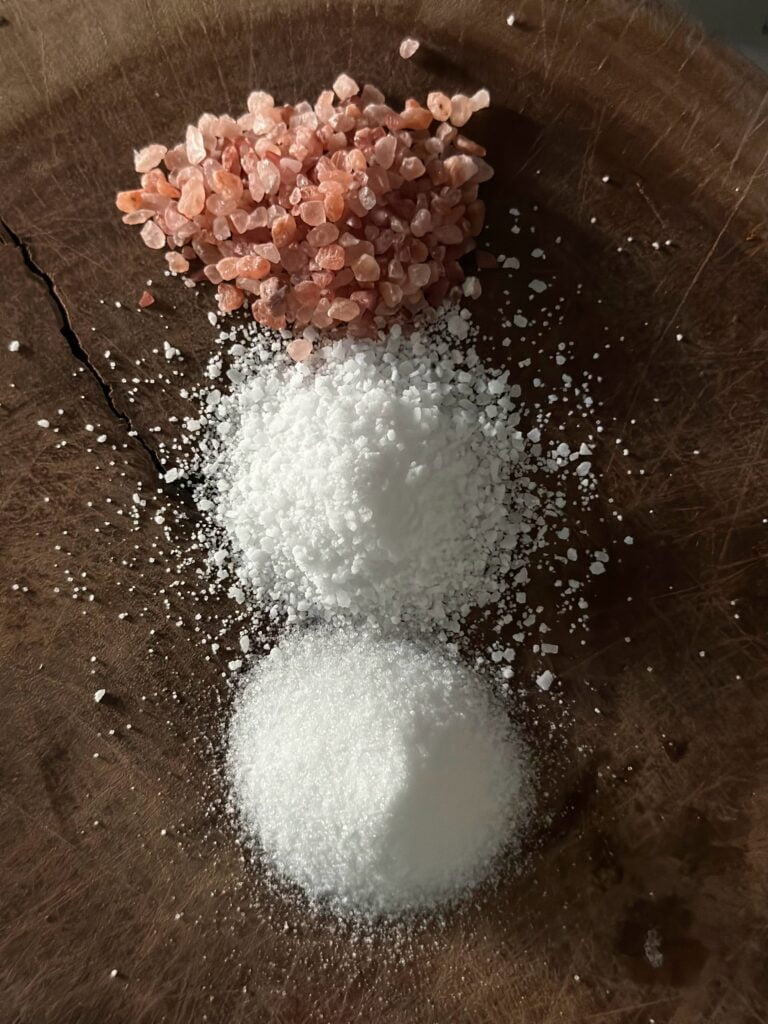
Supermarket aisles boast a whole variety of salts from pink Himalayan salt to kosher salt. How are these salt varieties different and how might these differences affect fermentations?
The type of salt used in sourdough bread can indeed have an impact on fermentation, taste, and structure, though the differences might be subtle compared to the overall quantity of salt used. Here’s how different types of salt can affect these aspects:
Fermentation:
- Chemical Composition Salt: Most salts used in baking are primarily sodium chloride, but they can contain different trace minerals and additives. These minor differences generally don’t significantly impact the yeast and bacterial activity in sourdough fermentation.
- Iodized vs. Non-Iodized Salt: There’s some debate about whether iodized salt (which has iodine added) affects fermentation. While some bakers avoid iodized salt in bread making, there’s no strong evidence suggesting that the small amount of iodine significantly impacts the fermentation process.
Taste:
- Flavor Profile: Different salts can have slightly different flavor profiles. For example, sea salt might have a more complex flavor due to the trace minerals it contains, while table salt is often just sodium chloride. These subtle differences can affect the final taste of the bread, though the sourdough’s inherent flavors often overshadow the salt’s flavor.
- Salt Size and Texture: The size and shape of the salt crystals can affect how the salt is perceived on the palate. Coarser salts might distribute differently in the dough compared to finer salts, potentially leading to slight variations in taste.
Structure:
- Dissolution Rate: The size and shape of salt crystals can also affect how quickly the salt dissolves in the dough. Finer salts dissolve more quickly, ensuring a more even distribution of salt throughout the dough. This can influence the gluten development and, consequently, the bread’s structure.
- Hydration Considerations: Different salts can have varying effects on dough hydration. For example, larger, coarser grains might take longer to dissolve, temporarily affecting the dough’s hydration until they fully dissolve.
Because of these roles, salt is an essential ingredient in sourdough bread, and its omission or incorrect measurement can significantly affect the quality of the final product.






[…] How Salt Influence Fermentation, Flavor, Dough Structure and Shelf Life […]
[…] How Salt Influence Fermentation, Flavor, Dough Structure and Shelf Life […]